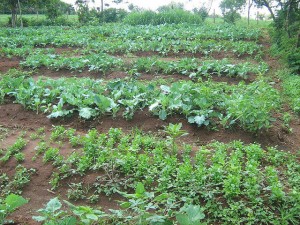 By Joshua Machinga of Common Ground for Africa
By Joshua Machinga of Common Ground for Africa
For centuries, farmers all over the world have selected and saved
seeds to grow the next season. Farmers have also cross-pollinated
plants by hand, or by mixing varieties within the same field, to maintain and adapt their crops.
Advantages of Saving Local Seeds
These locally adapted crops are able to withstand changing growing conditions. Some varieties may be resistant to certain pests
Others may be more tolerant of salty soil or may need less water.
Some varieties may be planted or harvested earlier or later in the season Others may have fruit that are tastier or grains that are easier to cook.
When farmers use their own seeds they are able to maintain a mix of crops suitably adapted to their own local needs. Organic farming works with nature using techniques to achieve good crop yields that are sustainable for the farmer and the environment. Seed saving and breeding locally adapted crops are important activities in organic agriculture in order to produce crops that are better adapted to local
growing conditions.
The Main Sources of Seed
In rural communities, the main sources of seed are:
Farmers and Gardeners
For many generations, all over the world, farmers and gardeners have saved seed from their crops every year to plant and to exchange or sell.
Community Seed Banks and Other Local Community Institutions
Some areas have community seed banks, or other social institutions,which collect, grow and store seed to distribute to farmers. Even a small group of people can start a seed bank to conserve local seeds and crops so farmers can use them.collect
National and International Seed Banks
National, government and international organisations and store seeds from different crop varieties. These are maintained by ‘growing’ out every few years. Although large seed banks can store many different varieties, they
cannot maintain all of the local varieties or adapt varieties to farmers’ changing local conditions.
Seed Companies
Seed companies develop and sell seeds for different crop varieties. Commercial seed companies usually select for characteristics such as high yield, quality and resistance to pests and diseases. However seed companies are not able to select for crops that are adapted to specific local conditions. Some commercial varieties need additional inputs such as chemical pesticides, fertilizers and high levels of water. Many seed companies produce F1 hybrid seeds. These
are made by crossing two different varieties to mix their characteristics. The first generation of plants from hybrid seeds
holds desirable characteristics, but it is not useful to save the seeds because these characteristics will not be passed on to the next generation. As a result, growers that use hybrid seed must buy new seed each year. Another major problem with the multiplication of hybrid maize seed is the increase of the disease called gray leaf
spot. Although large-scale farmers may be able to buy seeds every year, this is less affordable for small farmers. In addition, many people all over the world now realise how important it is for farmers to maintain their own local genetic diversity.
How Farmers Produce Their Own Seeds
A typical farmer-managed seed production process consists of the following steps.
1. Farmers weed their growing crops by hand to remove diseased and off-type plants. Selection is usually carried out based on characteristics including high yield, low input (including labor) requirement, resistance to pests and diseases, particular processing, cooking and taste qualities, storability, and good yield of non-grain biomass (leaves and stalks).
2. The crops are harvested by hand, which avoids mechanical damage to the seed and contamination with weed seeds and other inert material.
3. After harvest, crops are often threshed and cleaned by hand to minimize damage and contamination, and then they are usually dried in the sun to reduce moisture content.
4. Seed is often stored separately from grain. It is commonly hung overhead in a smoky place, such as the kitchen, to minimize insect damage and reduce moisture content. Also, seed can be preserved by adding local insecticides and/or fungicides (eucalyptus leaves, sand, ash, neem) before being placed in special containers and stored above the fireplace.
